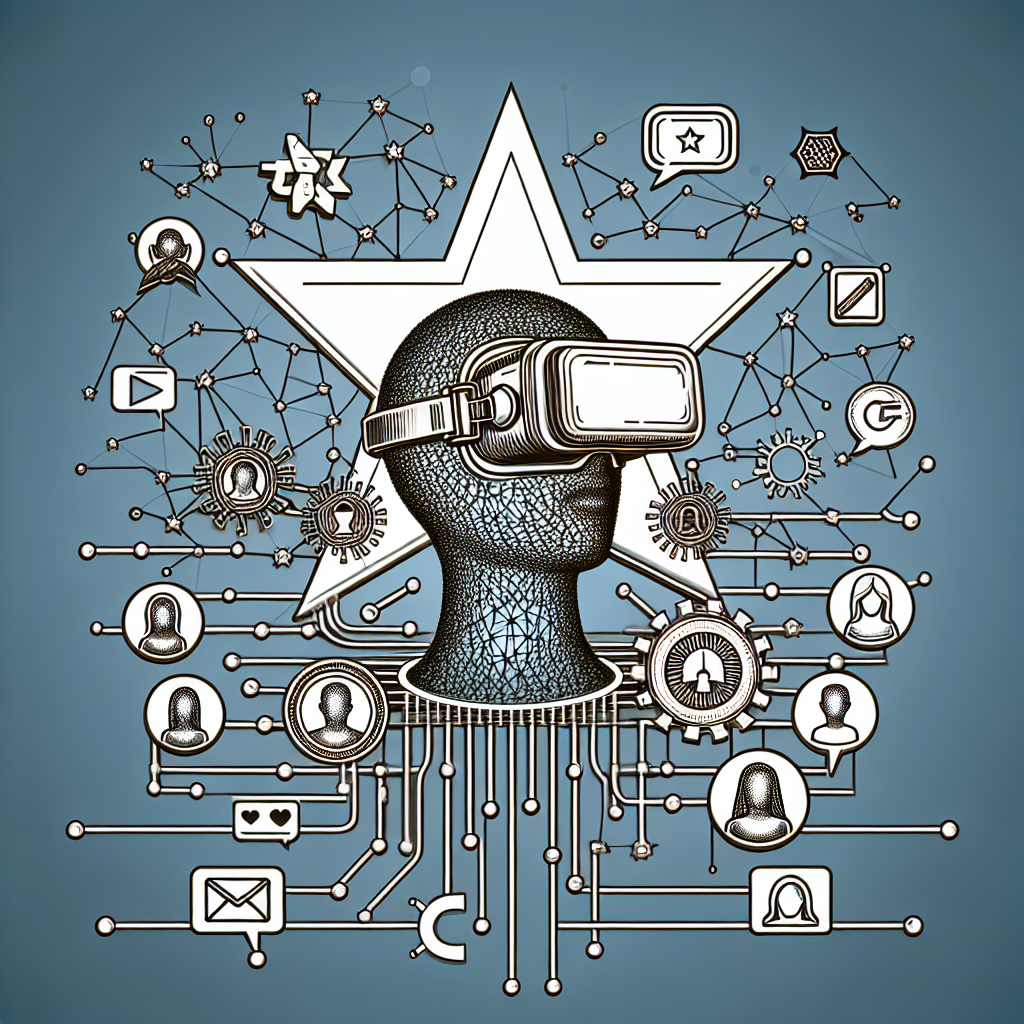The Influence of AI on Social Media Influencers: Creating Virtual Stars
In recent years, the rise of social media influencers has transformed the way brands reach their target audiences. These influencers have built massive followings on platforms like Instagram, YouTube, and TikTok, allowing them to promote products and services to their engaged audiences. However, as technology continues to advance, a new player is emerging in the world of social media influencers: artificial intelligence.
AI has the potential to revolutionize the influencer marketing industry by creating virtual stars that can engage with audiences on a whole new level. These virtual influencers are computer-generated characters that are designed to look and act like real people, complete with their own personalities, interests, and followers. Brands are starting to see the value of working with virtual influencers, as they offer a level of control and customization that human influencers can’t always provide.
One of the key ways that AI is influencing social media influencers is through the creation of virtual models and influencers. These virtual stars can be customized to fit a brand’s specific needs, whether it’s a specific look, personality, or style. Brands can work with AI companies to create virtual influencers that align with their target audience and messaging, allowing for a more tailored and impactful marketing campaign.
Virtual influencers also offer brands a level of control that human influencers can’t always provide. Since virtual influencers are computer-generated, brands can dictate their appearance, messaging, and even their actions. This level of control can help brands ensure that their influencer campaigns align with their overall brand image and messaging, leading to more successful and impactful campaigns.
Additionally, virtual influencers can work around the clock, engaging with audiences 24/7 without the need for rest or breaks. This can help brands reach audiences in different time zones and ensure that their messages are being seen by as many people as possible. Virtual influencers can also be programmed to respond to comments and messages in real-time, creating a more personalized and engaging experience for their followers.
Another way that AI is influencing social media influencers is through the use of data and analytics. AI can analyze vast amounts of data from social media platforms to identify trends, preferences, and behaviors of audiences. This data can help brands better understand their target audience and create more targeted and effective influencer campaigns.
AI can also help brands track the performance of their influencer campaigns in real-time, providing valuable insights into which strategies are working and which are not. This data-driven approach can help brands optimize their influencer campaigns for maximum impact, leading to better results and ROI.
However, while the rise of AI in the influencer marketing industry offers many benefits, it also raises ethical concerns. Some critics argue that virtual influencers contribute to the already unrealistic beauty standards perpetuated by social media, as these computer-generated characters often have flawless appearances that are unattainable for most people. Additionally, there are concerns about the potential for virtual influencers to deceive audiences, as some followers may not realize that they are interacting with a computer-generated character rather than a real person.
Despite these concerns, the influence of AI on social media influencers is undeniable. Virtual influencers offer brands a level of control, customization, and data-driven insights that can help them create more impactful and successful influencer campaigns. As technology continues to advance, it will be interesting to see how virtual influencers continue to evolve and shape the future of influencer marketing.
FAQs:
Q: Are virtual influencers replacing human influencers?
A: While virtual influencers are gaining popularity, they are not necessarily replacing human influencers. Human influencers offer a level of authenticity and relatability that virtual influencers can’t always provide. However, virtual influencers offer brands a level of control and customization that can be valuable for certain marketing campaigns.
Q: How are virtual influencers created?
A: Virtual influencers are created using a combination of computer-generated imagery (CGI) and artificial intelligence. Brands work with AI companies to design and program virtual influencers to fit their specific needs and objectives.
Q: Are virtual influencers deceiving audiences?
A: There is some concern that virtual influencers may deceive audiences, as some followers may not realize that they are interacting with a computer-generated character rather than a real person. However, as long as brands are transparent about the nature of the virtual influencer, this should not be an issue.
Q: How do brands work with virtual influencers?
A: Brands can work with AI companies to create virtual influencers that align with their target audience and messaging. Brands can collaborate with virtual influencers on sponsored content, product launches, events, and more.
Q: What are the benefits of working with virtual influencers?
A: Virtual influencers offer brands a level of control, customization, and data-driven insights that can help them create more impactful and successful influencer campaigns. Virtual influencers can engage with audiences 24/7, respond to comments in real-time, and offer a more personalized experience for followers.

